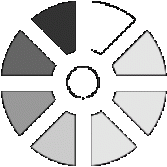Education in Mauritania
French rulers founded the first public education system in Mauritania. Schools were mainly concentrated in the sedentary communities of the Senegal River Valley.
In 1950, the first teacher training school was established at Boutilimit. In 1957, the secondary school in Rosso started teachers training. Public schools were mainly concentrated in South and hence the enrolment of black pupil was high. Majority of teachers in these schools were also black Africans. The schools situated in nomadic areas were not able to attract students.
The Maures were not in favor of public schools, and supported traditional Islamic education. However, with the passage of time these people started understanding the benefits of formal education and started sending their children to formal schools.
The French Colonial Government experimented with “mobile schools” post World War II and provided education to large number of nomad children. In 1954, there were 12 “tent” schools. These schools were involved in providing education to 241 students. Even some of these schools were functioning after 1960. The 1960 was the year when Mauritania gained independence from France.
The independent government of Mauritania viewed secular education as of the main technique for promotion of national unity and modern economy. Though the government has shortage of adequate educational resources in terms of trained teaching staff, school building etc. Another teacher training school was opened in Nouakchott in 1964. Education was not compulsory.
In 1964-65, there were 19100 students enrolled in primary schools and 1500 in senior secondary schools. By 1985 an estimated 35 percent of primary-school-age children were enrolled in school, but only about 4 to 10 percent of eligible secondary-school-age children were enrolled. In both cases, boys heavily outnumbered girls.
In 1985 – 86, primary school enrollment rose to 140 871 and enrollment in secondary and vocational was 36 674. According to government records there were 878 primary schools and 44 secondary or vocational institutions. The enrollment in post secondary training programs was 4336. In addition there were 448 students attending the National Islamic Institute, earlier known as the Institute of Islamic Studies and 1900 pupils were enrolled in different training programs abroad. The public schools employed almost 2,900 primary teachers, 1,563 secondary and vocational teachers (412 of them foreign), and 237 postsecondary instructors, more than half of them expatriates. In 1982, the National College of Administration and the National College of Sciences opened in Nouakchott. In 1983 nearly 1,000 students were attending classes at the University of Nouakchott.
In 1985, the adult literacy rate was estimated to 17 to 25 percent, which was approximately half the average for Sub Saharan Africa. The government of Mauritania has launched a major literacy program and created the State Secretariat of Culture, Information, and Telecommunications to head the effort.
In the same year, the government reported that the number of literacy classes had already increased more than ten times over the 1985 number. The cost of education was also high in comparison to neighboring countries. According to official records, in mid 1980s Mauritania was spending US$ 45 million on education every year. Planned investment in education for the years 1985 through 1988 was set at US$27 million under the Economic Recovery Program for 1985-88, an increase of less than 1 percent over the period from 1980 through 1984.
The French system of schooling remained there in practice into the late 1980s. In the early 1980s, instruction in the Pulaar, Azayr (Soninke), and Wolof languages was introduced into the primary school curriculum, and Arabic was emphasized at all levels.
Mauritania has shortage of skilled labors. In the mid 1980s there was only 15% senior secondary school students enrolled in vocational education programs. To redress this situation and to raise the general level of literacy, the government encouraged the growth of private and Quranic schools. Industrial training is mainly provided through private institutions. The government also got support from international organizations. In 1987, the World Bank agreed to help Mauritania government for building up of stronger education system.
Mauritania joined UNESCO on January 10, 1962. It is covered by the UNESCO Office Rabat, in Morocco, a cluster office also representing UNESCO in Algeria, the Libyan Arab Jamahiriya, Morocco and Tunisia. As of September 2006, twenty schools in Mauritania participate in the UNESCO Associated Schools Project Network (ASPnet).
 Processing...
Processing...
 Processing...
Processing...